Tissue engineering of human hair follicles using a biomimetic developmental approach
December 2018
in “Nature Communications”
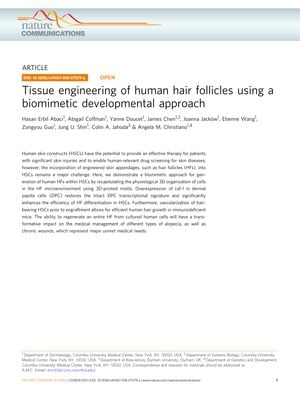
TLDR Researchers created human hair follicles using a new method that could help treat hair loss.
In the 2018 study, researchers successfully engineered human hair follicles (HFs) using a biomimetic approach and 3D-printed molds to create a conducive microenvironment. They discovered that overexpressing the gene Lef-1 in dermal papilla cells (DPCs) significantly improved their hair-inducing properties, leading to a 70% success rate of HF differentiation in human skin constructs (HSCs). The study also incorporated vascularization into the HSCs before grafting onto immunodeficient mice, which resulted in efficient human hair growth. The method showed promise for treating alopecia and chronic wounds, marking the first instance of generating human HFs entirely ex vivo from cultured cells. The study involved ten mice per condition, with seven grafts surviving and four successfully generating human HFs. This research represents a significant advancement in hair tissue engineering and could provide a platform for creating human HFs ex vivo for various applications.
View this study on nature.com →
Cited in this study
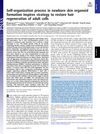
research Self-organization process in newborn skin organoid formation inspires strategy to restore hair regeneration of adult cells
Newborn mouse skin cells can grow hair and this process can be recreated in adult cells to potentially help with hair loss.
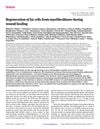
research Regeneration of fat cells from myofibroblasts during wound healing
Some wound-healing cells can turn into fat cells around new hair growth in mice.
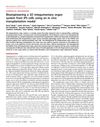
research Bioengineering a 3D integumentary organ system from iPS cells using an in vivo transplantation model
Researchers created a fully functional, bioengineered skin system with hair from stem cells that successfully integrated when transplanted into mice.

research Putting the Human Hair Follicle Cycle on the Map
The research created a model to understand human hair growth cycle, which can help diagnose and treat hair growth disorders and test potential hair growth drugs.
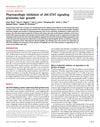
research Pharmacologic inhibition of JAK-STAT signaling promotes hair growth
Blocking JAK-STAT signaling can lead to hair growth.

research Epidermal stem cells and skin tissue engineering in hair follicle regeneration
Hair follicle regeneration needs special conditions and young cells.

research Oxidative Stress–Associated Senescence in Dermal Papilla Cells of Men with Androgenetic Alopecia
Oxidative stress affects hair loss in men with androgenetic alopecia.
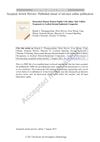
research Dissociated Human Dermal Papilla Cells Induce Hair Follicle Neogenesis in Grafted Dermal–Epidermal Composites
Human skin cells can create new hair follicles when transplanted into mice.
research Generation of folliculogenic human epithelial stem cells from induced pluripotent stem cells
Scientists created stem cells that can grow hair and skin.
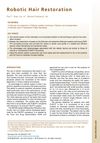
research Robotic Hair Restoration
The ARTAS robotic system for hair restoration is efficient with fewer cuts than manual methods, but it's limited to certain hair types and can still leave scars.
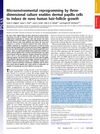
research Microenvironmental reprogramming by three-dimensional culture enables dermal papilla cells to induce de novo human hair-follicle growth
Growing human skin cells in a 3D environment can stimulate new hair growth.
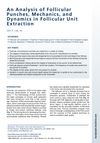
research An Analysis of Follicular Punches, Mechanics, and Dynamics in Follicular Unit Extraction
Using sharp tools and the right techniques in hair transplant surgery leads to less damage to hair follicles.
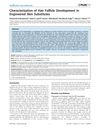
research Characterization of Hair Follicle Development in Engineered Skin Substitutes
Engineered skin substitutes can grow hair but have limitations like missing sebaceous glands and hair not breaking through the skin naturally.

research Fully functional hair follicle regeneration through the rearrangement of stem cells and their niches
Regenerated fully functional hair follicles using stem cells, with potential for hair regrowth therapy.

research The Hair Follicle as a Dynamic Miniorgan
Hair follicles are complex, dynamic mini-organs that help us understand cell growth, death, migration, and differentiation, as well as tissue regeneration and tumor biology.

research Hair matrix germinative epidermal cells confer follicle-inducing capabilities on dermal sheath and high passage papilla cells
Hair growth can be stimulated by combining certain skin cells, which can rejuvenate old cells and cause them to specialize in hair follicle creation.
Related

research Possible Cellular Communication with Human Follicle Dermal Papilla Cells via Secretions from Human Hair Follicle Keratinocytes
Substances from human hair cells can affect hair loss-related genes, potentially leading to new treatments for baldness.

research A model system to analyse the ability of human keratinocytes to form hair follicles
Scientists developed a system to study human hair growth using skin cells, which could help understand hair development and improve skin substitutes for medical use.

research Review of hair follicle dermal cells
Dermal cells are key in controlling hair growth and could potentially be used in hair loss treatments, but more research is needed to improve hair regeneration methods.
research STUDY ON HAIR FOLLICLE FORMATION INDUED BY DERAMAL PAPILLA CELL
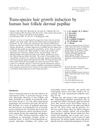
research Trans‐species hair growth induction by human hair follicle dermal papillae
Human hair follicle cells can grow hair when put into mouse skin if they stay in contact with mouse cells.

research Role of hair papilla cells on induction and regeneration processes of hair follicles
Hair papilla cells can create and regenerate hair bulbs under the right conditions.